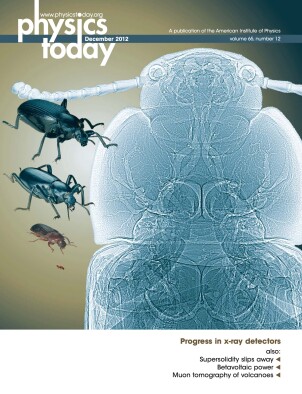Snowfall thickens the East Antarctic ice sheet
DOI: 10.1063/PT.3.1813
Snowfall thickens the East Antarctic ice sheet. As Earth’s climate warms, water from glaciers and ice sheets more readily ends up in the ocean, raising sea levels. Although the thermal expansion of seawater also raises sea levels, discharge from glaciers and ice sheets poses the more imminent threat. How much water an ice sheet sheds depends on the temperature of the air, land, and surrounding ocean. It also depends on the rate at which snowfall replenishes the ice. Provided it remains on land, snow lowers sea levels by sequestering evaporated seawater. Carmen Boening of NASA’s Jet Propulsion Laboratory in Pasadena, California, and her colleagues have just finished a study of ice accumulation over the entire Antarctic continent. Their study makes use of altimetry data gathered by NASA’s Gravity Recovery and Climate Experiment spacecraft between 2003 and 2011. Stark regional differences emerged. Whereas West Antarctica lost ice mass throughout that period, East Antarctica was stable until 2008, after which it gained 350 gigatons. That accumulation is equivalent to a decrease in global sea level rise of 0.32 mm/yr, or 10% of the current total rate. Precipitation data show two heavier-than-average snowfalls in May 2009 and June 2011 that could account for the mass gain. No snowfalls of similar magnitude occurred in the region since record keeping began in 1979. What’s more, whereas the heavy snowfalls in 2009 and 2011 coincided with an El Niño and a La Niña, respectively, previous El Niños and La Niñas had no such correlation. Recent changes in the character of El Niños could therefore be behind the mass gain. (C. Boening et al., Geophys. Res. Lett. 39, L21501, 2012.)
